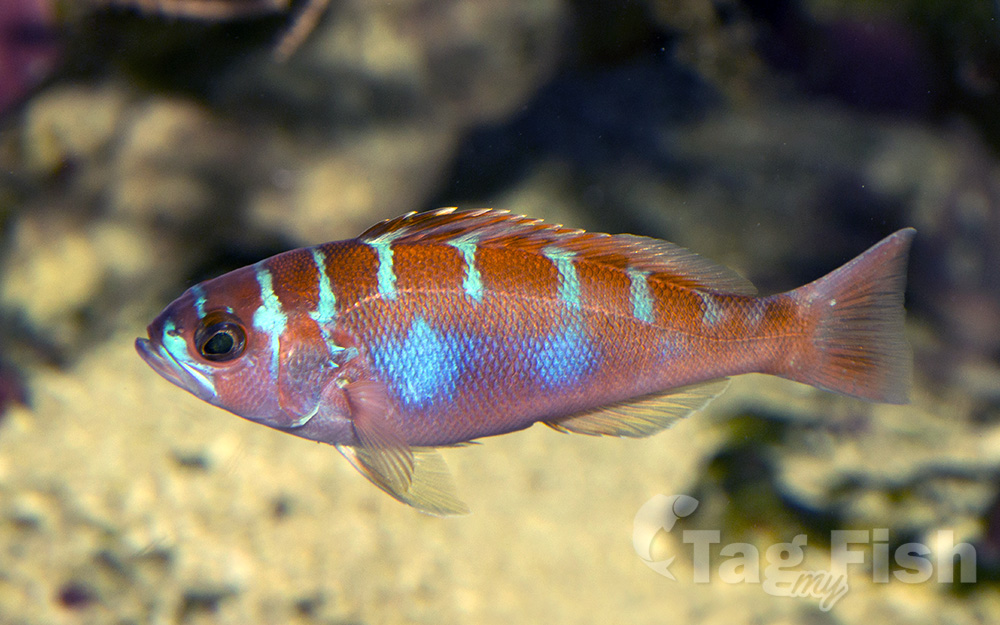Chalk bass
(Serranus tortugarum)

Classification
General data
Chalk bass has a laterally compressed elongate body with a pointed snout which is shorter than the diameter of the eye. It has 3 clearly visible spines on the gill cover, the middle spine being straight. The margins of the preopercle are regularly serrated but there are no spines at its angle.
The dorsal fin has 10 spines and 12 soft rays while the anal fin contains 3 spines and 7 soft rays. The caudal fin is truncate.
This species shows a variable coloration and patterning and can change the colour and pattern on its body in relation to its environment as a means of camouflage. The typical colour is that the head and body are pale blue-grey, to pinkish brown with 8 narrow, vertical blue-grey bars on the upper body, the most forward just to the rear of the eye and the last one on the base of the caudal fin. Where they are underneath the dorsal fin they extend onto it. There is a row of 2-3 pale blotches on the flanks and the colour of the fins varies from transparent to pinkish.
The chalk bass attains a maximum total length of 8.0 centimetres (3.1 in).
Serranus tortugarum is a species of the western Atlantic Ocean where it occurs from the Bahamas and southern Florida, throughout the Caribbean and along the mainland coast from southern Mexico to Venezuela.











